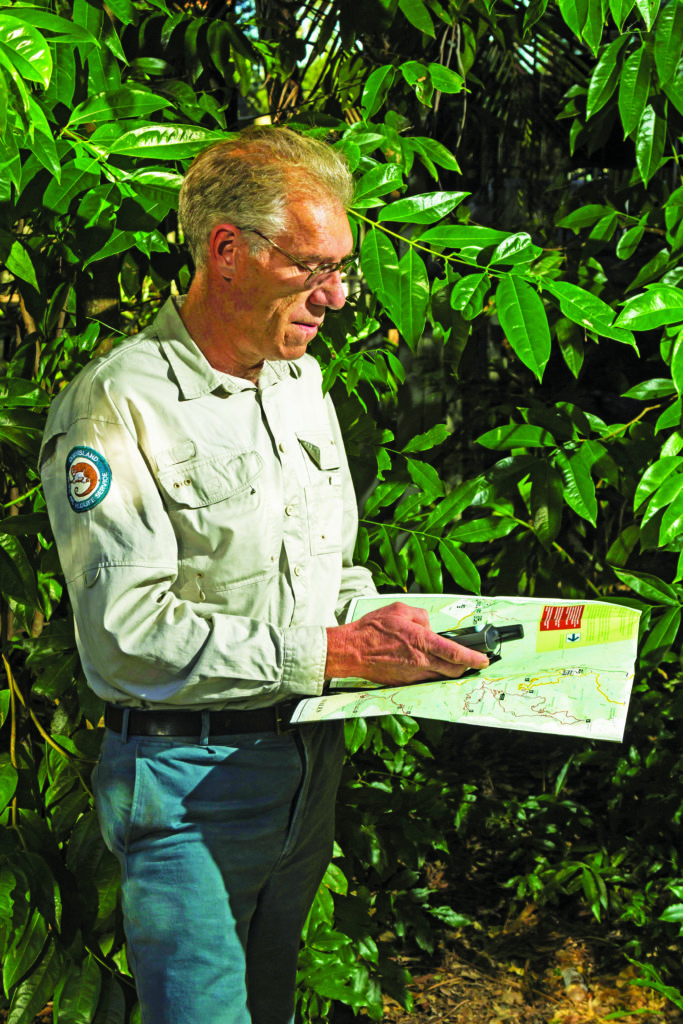Protected Magazine
Ranger Profile – Ranger Will
Will is Ranger in Charge (RIC) of Lamington National Park in the Gold Coast Hinterland. Born on Manus Island, Papua New Guinea, while his parents worked for the Australian Government administration, Will developed a connection to nature as a child through playing in the jungle, exploring old WWII relics, and going on seafaring adventures with his father, a government patrol boat captain.
Why did you decide to be a ranger?
I made the decision to go to Gatton College to study to become a ranger in 1986, after completing an A-grade motor mechanic apprenticeship (which I did not enjoy) and being inspired by school friends who had completed the course and were really enjoying the outdoors work.
How long have you worked in national parks?
I started temporary work with QPWS in early 1989 at David Fleay Wildlife Park, trapping and hand raising platypus with David Fleay before getting my first permanent ranger position at Mount Glorious.
Which parks have you worked in?
Some of the Traditional Owners for our parks jokingly call me the ‘RIC for Southeast Queensland’, thanks to the fact that I’ve worked in many SEQ parks during my 30-plus years with QPWS. The list includes Moreton Island, Tamborine, Nerang, Daisy Hill, D’Aguilar, Gold Coast parks and now Lamington (10 years and counting).
What is special about your current park?
Lamington National Park has three super special qualities. It is an iconic World Heritage listed national park and protects the most special section of forest—Antarctic beech forest over 1000m altitude—in south-east Queensland. It has an unmatched intergenerational connection for many people, more so than any other park in the State, as a result of nearly 100 years of intertwined relationships with the two lodges (O’Reilly’s and Binna Burra). And last but not least, the park contains over 500 waterfalls and is home to 5000-year-old trees!
What is your most memorable moment as a ranger?
My most memorable moments are the big natural events we have to navigate as a team, which include many ‘big campaign’ fires, such as the 20-week Sarabah wildfire; the major natural disaster deployments, such as going into Grantham after the 2011 floods or The Gap after the 2009 storm; along with some of the amazing rescues and recoveries in which I have been involved. One recovery in particular stands out—finding a man’s body and returning him to his wife on her birthday after he had been missing for 400 days.
Can you describe your favourite national parks experience?
I think I have been very fortunate to work in so many of our SEQ parks and across such a diversity of landscapes from Lamington to Moreton Island. I am yet to encounter a ‘bad’ national park, as every park has special places but the Antarctic beech forest >1000m is hard to beat!
What is the best part about working in a National Park?
The best thing about working in parks is the cultural and ‘family’ connections that you develop through working on country for extended periods, and through working with some amazingly-talented and knowledgeable people for years, including other rangers, scientists, park neighbours and some of our many stakeholders.
What is your top tip for visitors to your park?
As the Boy Scouts saying goes, ‘Always be prepared’ as success favors the prepared. And try not to visit alone, as the shared experience is often more enjoyable and usually safer. And two heads are generally better than one when you are in a remote area.


